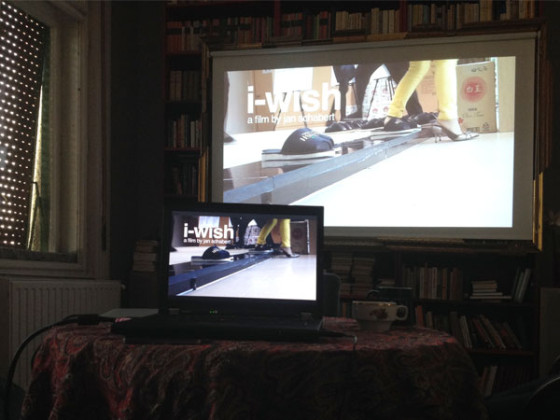Tesztszöveg
Tesztszöveg

9th Budapest Architecture Film Days, March 2017
by the Hungarian Contemporary Architecture Centre
Deadline: 15th November, 2016.
Do you have a film on architecture or the city? Send it to us! The Budapest Architecture Film Days is now accepting submissions for its 9th edition, to be held in Budapest in March 2017. We are looking for works in all genres, forms and lengths related to design, architecture and built environment. Entry is free. The mission of the film festival is to generate a dialogue between architectural practice that finds inspiration in cinema, and cinema borrowing its subjects from architecture and the city. For more information about the festival, please visit filmnapok.kek.org.hu/en/
For related questions, please contact filmnapok@kek.org.hu.
Please find the steps of submitting a film below:
1 – Fill out the form
2 – Send your film via an online file-transferring platform (dropbox, wetrasfer, etc.) to filmnapok@kek.org.hu

We are delighted to collaborate with the Index blog “Urbanista” this year: Dávid Zubrecki recommends 5 must-see films from this year’s lineup and you can buy tickets for these screenings in one pack with the Urbanista pass.
Strange and Familiar – Architecture on Fogo Island | 4th March, Friday | 18:00 and 6th March, Sunday | 13:30
You’ve Been Trumped | 4th March, Friday | 21:15
Last Exit Alexanderplatz | 5th March, Saturday | 17:00
The Land of Many Palaces | 5th March, Saturday | 19:00
Millionaire Basement Wars | 5th March, Saturday | 14:00 and 6th March, Sunday | 16:00
Dávid Zubrecki started his blog in August 2008 and since then the blog has seen numerous changes. One thing remains the same, however. He always asks the most pressing question we can face daily: where do we live? His answers, completely independent from the fact whether he emulates the tone of humorous real estate advertisements or examines serious city planning decisions, are always actual and relevant.
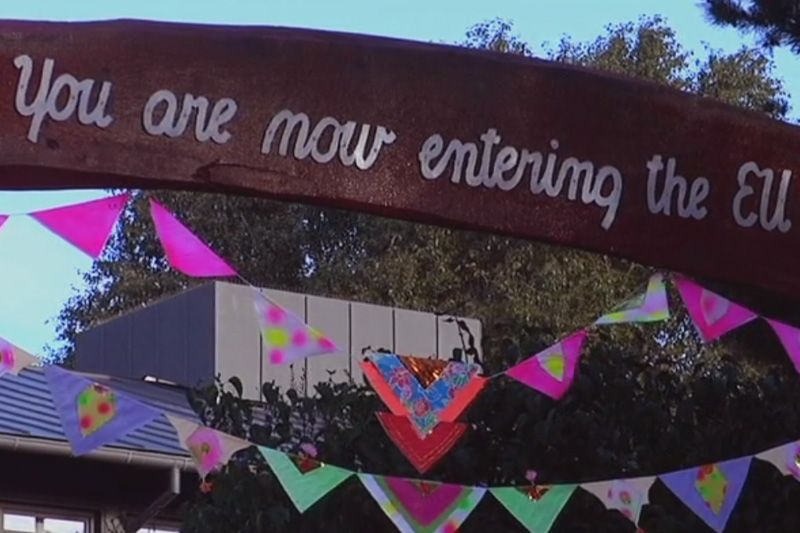
Anna Bajomi
Film: Christiania – 40 Years of Occupation (Robert Lawson, Richard Jackman, 2014, 76’)
Friday 6 March – 19:00
The story of Christiania started in 1971. As a response to the severe housing problems of Copenhagen at the time, some young people squatted an abandoned military basis in an island of the city. And the community founded by the squatters is still working, after more than 40 years.
In this documentary cheerful young and elderly members of the community tell us stories, through which we can gain insight to the island’s history, everyday life and important issues and conflicts of the community. It is impressive to see how they turned the military base into their home, how they are building new flats from caravans in an organic way, and we get an answer to the questions like where they buy everything for their houses if not from Ikea and what they do for a living. Concerning the education of the children the kindergarten teacher gives us an impression. All of these stories are backed with beautiful pictures: ducks by the lake, picnic on the green grass, mural paintings and decorated garbage trucks.
But parallel to this idealistic picture difficulties are arising. The hard-drug problems of the seventies caused a severe crisis but the community finally pushed out the dealers. The police chief of Copenhagen and an officer „in charge of” Christiania is interviewed. While the community has existed for 40 years, conflicts with the police and other authorities arise periodically mostly because of the open hashish trade on the streets, the absolute dominance of community property (especially of flats), the questionable legal situation of the island, or other smaller scale issues like the violation of the Building Code.
Despite the tense situations Christiania lives on! The community of the is-land knows something: even if it is time consuming, the consensus-based decision-making is working, and it makes the decisions legitimate for long term. Their way of fighting with the police, mostly in a non-violent way using the arsenal of humor seems to be an effective strategy. The survival of Christiania is probably due to the commitment of the inhabitants and to the fact that the Danish public has always stood by Christiania when police attacks proliferated. The openness of the surrounding society in periods of peace is also likely to contribute to the blooming of the island.

Réka Kovács
Film: If You Build It (Patrick Creadon, 2013, 86’)
Satudray 7 March – 17:15
The hackneyed phrases related to teachers like ‘sowing the seeds’ or ‘founding the future’ get an update and shiny new meanings by this film. Even literally. As Emily Pilloton, project owner of Studo-H (and high school teacher) puts it after her schoolyear: “it wasn’t for nothing”.
So there is a determined design nomad couple with a precisely made up curriculum, invited to the poorest (and dustiest) county of North Carolina by the progressive local superintendent. Poorest county or not, there is also a pick-up driving, spotty-faced group of kids, representing all the stereotypes of the American countyside youngsters – even their speech needs to be subtitled a few times.
‘Together We Can!’ – declares a sign in the council room of the local school board. The place where the board members decide to suspend the superintendent, along with all the projects proposed by him, just after Pilloton’s and Matt Millers’ class being started.
However they stay, and this is how we are given the opportunity to wit-ness this supposedly boring, familiar progress: the growing of the ‘stalk’, the ‘planting’, the ‘building in’. Director Patrick Creadon’s camera records exactly those teenager gestures: smeared rejoice, shy smiles, that are able to make us understand with the heart and mind, and once and for all, what the job of a great teacher can mean to the world. The message definitely has an underlined importance with design involved in the story.
After placing spectacular, visionary chicken coops around the small town followed by the growing interest of the residents, the group goes ahead to develop a conception and to design a real building for the local farmers’ market.
It’s not only the young individual’s success at stake (by learning to read a blueprint, to weld, to be able to think in stages of a process, to own a purpose, to build a life), it’s also the long term progress and success of a local community by offering them a solution for a current problem.
And this can be seen in the teens’ workshop: by the time the winning concept is being chosen from the individual designs, the question of proprietary and common is not a question anymore for this very group of students. And the real challenges, real responsibility, real construction with the power of real changes being experienced bring hundredfold harvest on this dry and dull (?) plain of North Carolina.
On the local council’s website a professional building photo of the farmers’ market can be found today. Built at the expense of the hard struggle presented in the film, now pride of the town. It’s the same local council that did not grant any kind of salary for Emily and Matt during their work, and never after their project had been carried out.
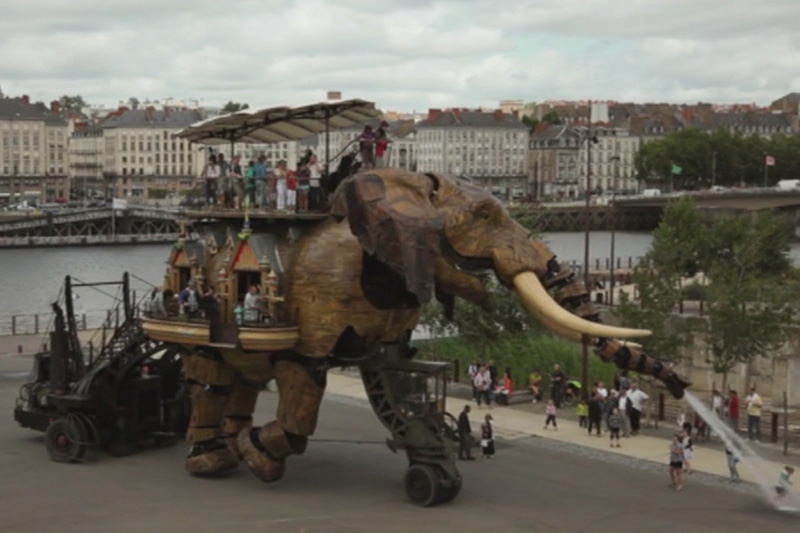
Vera Horváth
Film: Machines of the Isle of Nantes (Dominique Deluze, 2013, ’52)
Friday 6 March – 21:00
The old industrial port of Nantes was built on Île de Nantes, the last major island of the Loire before it runs into the Atlantic. The last boat left the port in 1987, closing down a page in the city’s history. The function of the industrial port was taken over by the ocean shore complex of Sainte-Nazaire, and the shipyards of Île de Nantes lost their function and fell into decay.
The city council could not find new investors for the area, so it decided to let the buildings free of charge for community and cultural purposes, to prevent urban decay. Among the newcomers was Royal de Luxe, a mechanical marionette street theatre company, who used grandiose creations – giant humans, animals and monsters – to shake up street audience, and give them a short break from reality. Their shows swiftly gained popularity among the Nantais. In 1989 the company was given a 10,000 square meter hangar on the island, which allowed them to prepare a permanent gallery with large scale artwork.
The company active to date, La Machine, was established in 2007, and be-came a stable of Nantes cultural life. The city of Nantes began the regeneration of the island, a project partly based on the success of La Machine, and allocated nearly 5 million euros to support the creation of the company’s “zoo” of mechanical creatures. The city council saw an opportunity in the high artistic quality and popularity of the shows: they set out to create a community and cultural space that is fit to popularize culture, and is able to bring art into the everyday life of the citizens of Nantes. Of course, the project was also in-tended to stimulate tourism, and to improve the city’s perception: to rebrand it as a place of creativity and art, instead of a shrinking post-industrial hub. The regeneration project runs until 2023, although the council already sees it as a great success. The Machine Gallery is vastly popular among the Nantais, which allowed the city to renew most of the island’s area, establishing parks and playgrounds. Besides La Machine, the island has attracted other art companies, hospitality services, a Fine Arts faculty, and real estate developers.
Members of the company quote the imaginary world of Jules Verne and the blueprints of Leonardo da Vinci as inspirations for their work. The steampunk style of the giant creatures, their visible metal structures and finely carved wood, matches the post-industrial old shipyard buildings beautifully; the same way their creators, working with power tools in protective clothing, have found an ideal site in the renovated industrial complex. The audience walking around in the company’s hangar building does not only admire the giant fauna (chameleon, flying fish, turtle, and the 12 metre high Great Elephant, set to carry 49 passengers at a time). They also get the opportunity to control or ride them. According to creator and artistic director François Delarozière, their mechanical structure serves as a counterpoint to the virtual nature of the post-modern era: the viewer becomes a participant, and has to use the physical movement of his own body in order to control the movements of the creature.
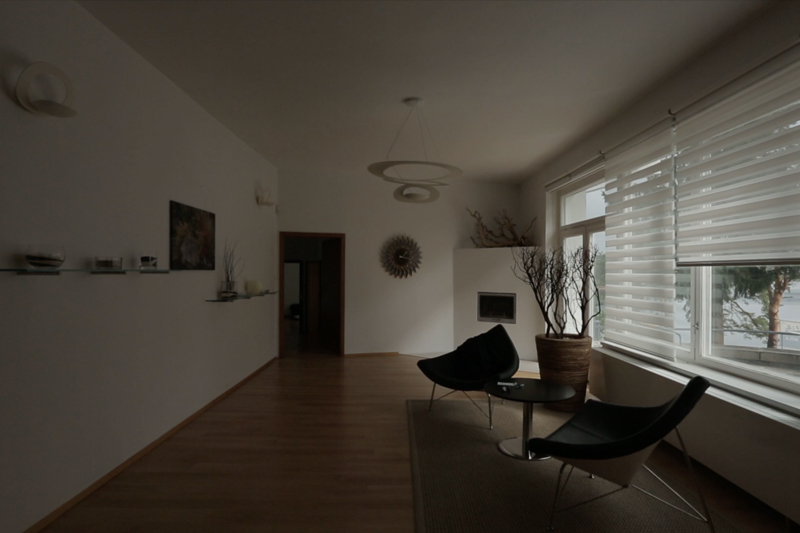
Dániel Kovács
Film: Resort (Martin Hrubý, 2014, 24’)
Saturday March 7 – 18:45
Often enough, one ignores the fact that even historic figures had private lives – perhaps this is at least partly due to how preoccupied we are with our own. They too had rushed to pick up kids from school, bickered with spouses, gone to the movies, done their washing and cooking and ironing. In better times, they too would take family vacations. For Hungary’s state socialist elite under János Kádár, this would involve a heavily guarded resort complex at Balatonaliga, by the ‘Hungarian Sea’; the Czechoslovakian party elite would retire to a similar holiday arrangement in the South Bohemian mountains, beside the Orlík reservoir.
Martin Hrubý’s film deals with the story of the Orlík resort, complementing the period’s promotional texts with poetic footage of the buildings’ present-day demise, and fond reminiscences with powerful images of nature reclaim-ing its own. While we in Hungary have yet to give an account of the exclusive Aliga resort, we now have some fascinating insights to its South Bohemian counterpart. Its construction commenced immediately after the reservoir was finally finished in 1961. To spare expenses, the Czechoslovakian state commissioned convicted engineers and skilled labor to the site: word had it that the boon of high quality unpayed labor was the very motivation behind many a show trial.
The complex was designed by resort specialist Jaroslav Vaculík, himself a student of Le Corbusier. In the late 1950’s by some mischance Vaculík was accused of embezzlement and promptly detained, though he was eventually released on parole. The entire resort complex was state-of-the-art and is still a wonder to behold: compared to the hodgepodge repairs on the Aliga grounds, this is a unified and well-preserved monument of imaginative Czechoslovakian modernist architecture.
Being an exclusive resort for elite party functionaries, Orlík was frequented by the likes of Communist Party premiere Antonín Novotný and his successor under the years of ‘normalization’ following 1968-69, Gustáv Husák. Following the system change, while Aliga was privatized and left to dismantlement and eventual ruin, most of the Orlík villas were passed from the Czech state to the reinstated old upper crust. The neighboring forests were returned to the Schwarzenberg family, while the premises were guarded by the men of one Radovan Krejčíř, shown in the film to be among the richest men in the Czech Republic of the nineties and a bigtime mobster, finally forced into emigration. Most of these villas stand empty today, while the main building operates as Hotel Orlík, steering daintily clear of Czechoslovak nostalgia and aligning apolitically. It seems to have found the right track.

Samu Szemerey
Film: London Orbital (Christopher Petit, Iain Sinclair, 2002, 77’)
Saturday March 7 – 17:15
Ode to the world’s longest ringroad, a conversation on the edges of fiction, documentary and reflection, road movie on a highway closing onto itself and around a city – the work of Iain Sinclair and Chris Petit steps beyond genres to map London’s subconscious.
Who doesn’t ask herself while driving somewhere on the M0: what is actually this landscape, where they and everyone else just speed through? What is there in the transitional zone where the traditional notion of the city ends? The liminal metropolitan areas have always been the land of the imaginary and the unknown, experimental grounds where the mutations of the built environment freed from history show an entirely different face of their age. London Orbital is a field guide and a travelogue leading to the sources of questions and dilemmas around millennial New Labour’s booming urban development.
Sinclair’s book with the same title was published before the film, after the author spent a year walking around the M25, a 188 kilometer long ringroad around London. The book focuses on the psychoanalysis of the city, mapping its psychological geography while uncovering the hidden, often absurd, surreal or outright occult memories of the built environment. The film made with Chris Petit retraces this route, moving the perspective of observation from the walk to the highway.
“To get to the point where the city loses its mind” – the journey between mental hospitals, villas, logistical and shopping centers, swamps and residential communities layering onto each other contemplates the remains of possible futures. The city’s historic image dissolves in this fragmented landscape to give way to visions and speculations about the present and the future. This way the M25, built in the Thatcher era, is transformed from a mere industrial relic to a memorial of dissolving British social democracy, molding suburbanization, commercial and private developments and the mysterious zone around the city into a monumental vision.
How can the monotony of the bypass, the infinite boredom of driving turning into meditation be shown in cinema? The radical visual gestures of the film symultaneously map this mental state and the landscape now almost invisible beyond the highway, yet instrumental in understanding the con-temporary city.
Great cities are places one can dream about. Present and future are open where imagination can function. London Orbital investigates imagination and time, walking and driving, shopping and terrorism, film and image while stepping into the worlds of Bram Stoker, G. H. Wells, J. G. Ballard and the contemporary city.
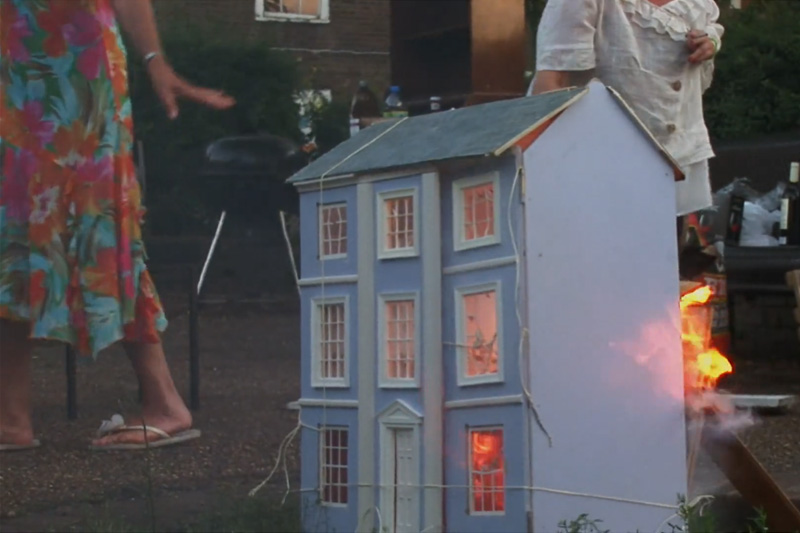
Daniella Huszár
Film: Estate, a Reverie (Andrea Luka Zimmerman, 2015, 84’)
Thursday March 5 – 19:00
Housing is one of the key themes of this year’s festival. The strongest piece among the films dealing with this topic is Estate, a Reverie, which documents the last days of a community living in Haggerston Estate, a social housing project in London. We chose this movie as the opening film because it tackles a policy issue that defines our everyday life with unique sensitivity and universal language. It treats a lurking and often untold crisis phenomenon with undisguised honesty that is as current in Hungary as it is in Britain.
The film addresses the issue of housing as a fundamental human value, showing the human norms of living together, by portraying the everyday life of a community that in the face of the realized loss could experience temporary rebirth in its functioning. Human to the core, the film succeeds to dispel the unusual stereotypes associated with such communities from the very first still, and momentarily suspend discrimination and underrepresentation. The film employs unique methods from participative observation to performance. The director herself was living in the estate for 17 years, the shootings lasted for 7 years allowing for the creation of a masterful compound of empathy and intimacy.
According to the director, “It feels important to say that Estate, a Reverie has not been made about this community, but has been made from it. Through a variety of filmic registers and strategies, the work seeks to capture the genuinely utopian quality of the last few years of the buildings’ existence, a period when, because demolition was inevitable, a sense of the possible, of the emergence of new, but of course time-specific, social and organizational relationships developed, alongside a fresh understanding of how the residents might occupy the spaces of the estate.
Estate, a Reverie focuses on the ‘structure’ of its eponymous architecture not only because it is where we live, but also how we live. The film explores the multiple implications of what most explicitly defines us to other people, while simultaneously challenging that often all too mono-cultural definition and revealing the complex diversity of the population it houses.
Estate, a Reverie is, inevitably therefore, about housing, and about the policies that lead us to live lives at the mercy of governmental and financial decisions. But, much more, I hope, it is about how we belong in the world and what structures of meaning exist to define personal and social lives. How do we resist being framed exclusively through class, gender, ability or disability, through geography even? How can we express the fullest possibility of our being, creatively and collectively?”
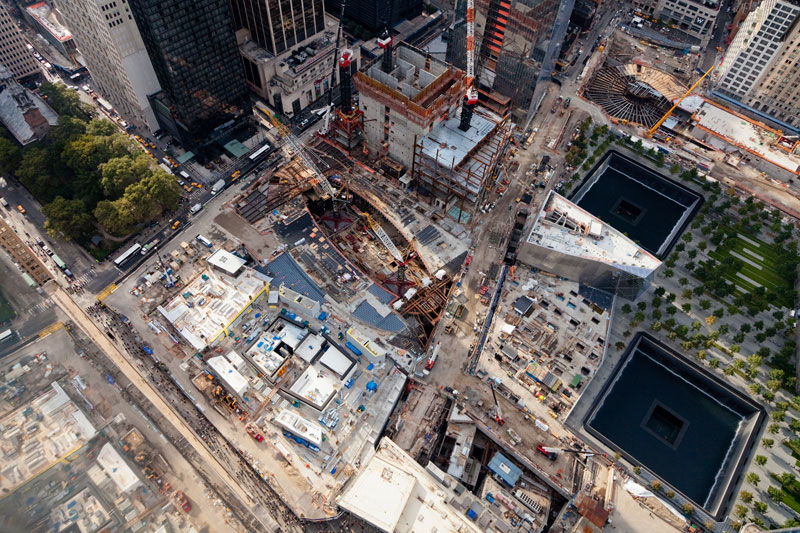
Gábor Fehér
Film: 16 Acres (Richard Hankin, 2012, 95’)
Thursday March 6 – 19:00
What was the reason that public involvement could not succeed? What kind of personal and political interests slowed down progress? What was the reason that an architectural competition could not be enough? Why would we think at all it’s an architectural question per se? Why is the Ground Zero so different than any other site with the same parameters around the globe? Richard Hankin’s film rounds up the events, conflicts, and, of course, the emotions, which accompanied the much-needed answer to 9/11. It was evident that after the terrorist attacks not only a physical but also an intellectual and emotional void took over the site of the twin towers. And, in fact, it did matter whether they stick with a built solution, an iconic building or the absence of the site becomes the sign of remembrance. After the initial expectations of the top figures of New York and the participative attempts have failed, only an architectural competition could possibly offer an adequate answer.
Or could it? There were star architects everywhere, though. The prominent mega company named LMDC had chosen Rafael Viñoly, but governor Pataki wanted none of that, so he declared Daniel Libeskind as a winner instead. A futile attempt on his part as real estate investor Larry Silverstein wanted his own architect, David Childs in the position, saying Libeskind had not built a skyscraper before and, after all, that is not the opportunity for him to start experimenting on his money. Amidst the real power play, the prestige battles and bidding on each other the umpteenth nominee, Michael Arad had had the chance to be green lit in the side tracks – instead, after their initial support, the families spent a whole night protesting in the cold. And when everything had seemed to correlate, the insanely expensive transportation hub in the nearby, designed by Santiago Calatrava, almost bled the WTC project completely out. In the end, buildings of Richard Rogers, Norman Foster and Fumihiko Maki were erected, girdling the memorial around.
While there were an abundance of promises and solemn speeches during the whole ten years, the initial optimism was being replaced by scepticism and a growing number of questions. What is going to be built, who is going to build it, what are the costs going to be and most importantly, when is it going to be finished? Battles between Silverstein and the authorities broke out, families were stepped over by the decision-makers or just a crucial letter went missing. And when the cornerstone had been laid, the plan of the tower to be erected needed a complete makeover at a new site. Anyway, it’s a typical case where not the end, rather the path matters. And that’s an emotional rollercoaster filled with schemes, irony and mourning. That’s what 16 acres is about.

Csaba Jelinek
Films:
Agoraphobia (Imre Azem, 2013, 53’)
Sunday March 9 – 15:30
Overdrive: Istanbul in the New Millennium (Aslihan Unaldi, 2011, 75’)
Sunday March 9 – 17:30
“They are changing the whole world. But they, the rich, they cannot take that all, that cannot be!” – says an old lady whose land and house, where she lived for the past fifty years, will soon be expropriated. We are in the suburbs of Bursa, in West-Turkey, where the interview was made, during a four-day study visit involving half a dozen urbanists familiarizing with city developments of Ankara, Bursa and Istanbul. In Imre Azem’s film, Agoraphobia, we are becoming policy tourists for four days to understand complex processes – namely Turkish city renewal practices, and related social, economic and political procedures, through “site visits” and “expert meetings”. An analysis of such a study visit, in itself, and of the potential knowledge gained through it, would be quite an important task.
It is not easy to focus on these meta-questions though, since the urbanization issues and public policies in matter, are amazingly complex and interesting in themselves. For the first glance, we face a similar modernization project that has redrawn the images of socialist cities of Western Europe: 15-20- storey buildings rise in quarters where one-level buildings did earlier; suburbs are replaced with the good old panel block housing aesthetics. Participants, mainly from the Netherlands, cannot resist comparing Turkish city rehabilitation projects to those in the beginning of the century, in the Netherlands. It slowly turns out, that nothing is, as it seems: “slums” sentenced to demolition do not turn out unlivable. “Social housing”, as it appear in official documents, means condos for previous tenants with a huge mortgage in reality. So-called “city regeneration” projects are more likely to be drastic interventions of bulldozers. And despite the facts, that the volume and costs of almost half a million apartments, having been built by a state owned organization called TOKI, resembling to the housing investments in Eastern and Western Europe after the Second World War; their realization, organizational and political frameworks significantly differ from them. We cannot ignore dissimilar social contexts, demographic tendencies, political intentions and Turkey’s position in global world economics.
Although the situation presented in the film is globally known – including disappearance of public spaces, the crash of interests of market philosophy and low-status city dwellers, it is important to map local peculiarities and local terms of resistance. It is worth “co-watching” Aslihan Unaldi’s film, Overdrive that introduces housing in Istanbul and other city conflicts including consequences of global warming, matters of city (public) transport, and how such problems are embedded in historical narratives. After watching the two films, we may have a better understanding on the background of the ongoing urbanization boom in Turkey. Furthermore, we may learn a lot of the motivations of the country-wide growing oppositional movement, rooted in the protests on Taksim square, accompanied by a thorough media cover.

Samu Szemerey
Film: Away from all suns! (Isabella Willinger, 2013, 77’)
Sunday 9 March – 20:00
The short period of Russian Constructivism was a unique experiment to create a new architecture. The movement, which declined with the rise of Stalin’s cultural propaganda, set out to create the forms and spaces of modern society and the optimistic visions of progress. Its program was as radically new as its uncompromising aesthetics: housing compounds with kindergartens and canteens, public buildings with libraries and theatres showed the changing social roles of women, children and workers.
This unprecedented heritage exists today mostly in ruins. Embedded in Moscow’s urban tissue the living units, printworks, workers clubs and schools shown in Isa Willinger’s documentary still stand as uncanny mementos of a once envisioned, fantastic future. Their modernity is at once heroic, intimate and tragic, evoking Nietzsche’s comments on a world after the death of God, but also mankind’s unquenchable momentum and optimism in its quest for the future.
Today’s occupants may fight against their buildings, or for actually saving them. The film shows the fates of utopias called home, the experiments of domesticity, and the calling out of the forgotten future’s ghosts by rebuilding the futurist opera Victory over the Sun. The manifestos of one of the most significant periods of architecture in the last century seem today just as timely and radical as ever.
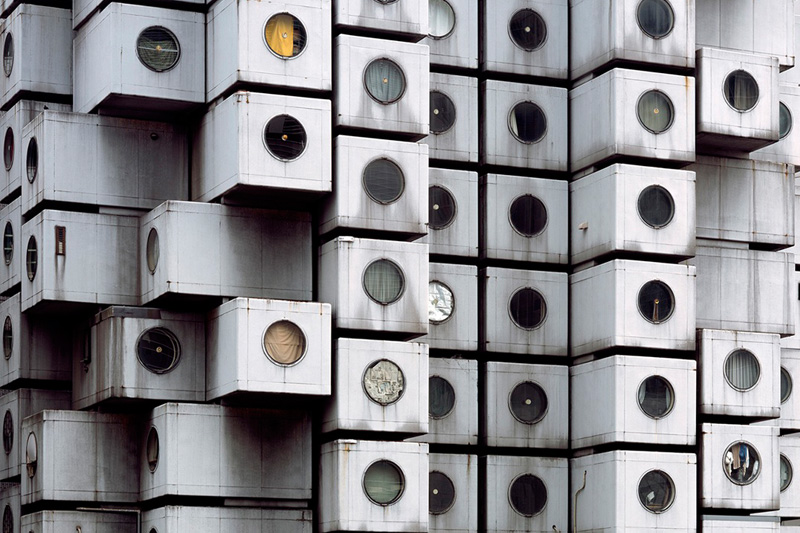
Balázs Irimiás
Films: Nakagin Capsule Tower: Japanese metabolist landmark on the edge of destruction (Yamazaki Rima, 2010, 58’); Intercalary spaces (Damien Faure, 2012, 50’)
Saturday 8 March – 21:00
The Nakagin Capsule tower is a landmark of Japanese architecture; even those know it, for which metabolism does not extend beyond their own diet. They might not remember its name, only the iconic 3D dominos hidden behind a highway in Tokyo.
The movement that pinned Japanese architecture onto the world map – Metabolism – had the power of joint thinking, joint dreaming and joint vision of built environment, popping up during the accelerated post-war mass construction, possibly in response to the largely futile architectural attitude of the era. These visions usually stay on the planning desk, unless they emerge during exceptional economic growth periods. Not incidentally the oil economies of the Middle East were utterly fascinated by the movement, nonetheless Japan remained the place for most practical realizations. Nakagin Capsule, the Japanese Metabolist icon is now on the verge of demolishing.
Prominent theoreticians worldwide have referred to this Japanese golden era of architecture from the sixties ever since. Being unique, as a group of courageous and experienced architects mutually proliferating each other, came up with their dreams of futuristic grandeur collectively.
The object representing the central philosophy of Metabolism is the brainchild of their youngest member that time, Kisho Kurokawa. He regarded the Nakagin capsules a sine qua non of Metabolism, going to extremes in saving it from being vanished (he bought 8 capsules himself) disregarding economical and maintenance feasibility.
Now, as the destruction becomes an utter menace, the movie goes after the human aspect. I won’t promise a U-turn, nonetheless it will take the most radical conservationists for a short trip to the other side at least.
Urban gaps
Extension of living spaces to the public realm, siege of the public domain are getting more of an issue in Hungary nowadays. But Japan is the country where it has been up for many decades, due to their population density, cultural background and their worldview.
These ideas gain popularity during economic crisis rather than economic growth – like what we are experiencing right now.
The French documentary lines up some unexpected characters – the self-taught insectologist, the ornithologist or the PE teacher – next to the architect experts of omnipresent and functioning nanoscale city spaces, proving all the same. These tiny gaps in the urban fabric deserve our attention, even if we are not necessarily aware of their existence.
The segment of contemporary Japanese architects who design multi-storey residences on land that was left behind, being too small for a bicycle parking, express their views, like the founders of Atelier Bow-wow or Life & Shelter, who are credible and passionate on their field. The unmaintained urban gaps are important, they are part of our closet, check the movies, they are actually beautiful.

Bálint Kádár
Film: The Venice syndrome (Andreas Pichler, 2012, 80’)
Sunday 9 March – 17:30
Venice is a strong brand today, a must-see destination, and big business. It is a must see place, and all are coming to see it. All those tourists rarely think about how a city of 200,000 inhabitants in its glory days can support 21 million visitors each year. It cannot. Today we reached the moment when the number of tourists arriving to Venice each day outnumbers the 58,000 locals still resident here. The danger is evident, if one recognizes that a city is not merely the aggregate of all the buildings, statues, streets and canals, but the community of people creating, developing and maintaining these spaces and artefacts. That is, the culture of the city. The film visits some of the inhabitants of the city, to show what have remained of the culture of Venice, how real urban life becomes impossible under the pressure of mass-tourism. The creator is consumed by its magnificent creation.
Tourists do not have a leading role in the movie of Andreas Pichler. We can have a precious insiders look into the real Venice, to be feared that it will be a last one. The main discourses are about the closing of the central post office, the difficult situation of the famous Rialto fish market, the moving of parts of medical care to the mainland, and of the difficulties to buy milk in the neighbourhood. Some organize demonstrations, some sign petitions, but all faces carry some kind of resigned sadness. To all these people the “terraferma” – mainland is alien world, but they cannot resist the high rents and ceasing services. A dissolving community leaves behind only a desert of souvenir shops and holiday apartments. The scale of mass-tourism compared to the possibilities of locals correlates well to the scale of the luxury cruiser ships invading the views of the Venetian palaces.
The old gondolier, the removal man with his boat, the tourist guide or the musicians rented for serenades all watch with incomprehension the take-away tourists, and the mere headway of superficiality and mass consumption in this industry – the only one left. The acclaimed writer and landscape architect Trudy Sammartini cries out a quiet fulmination: “Barbarians”! According to present tendencies the last inhabitant will leave Venice in 2030: the thousand year old culture will then fall in the hands of barbarians definitively.
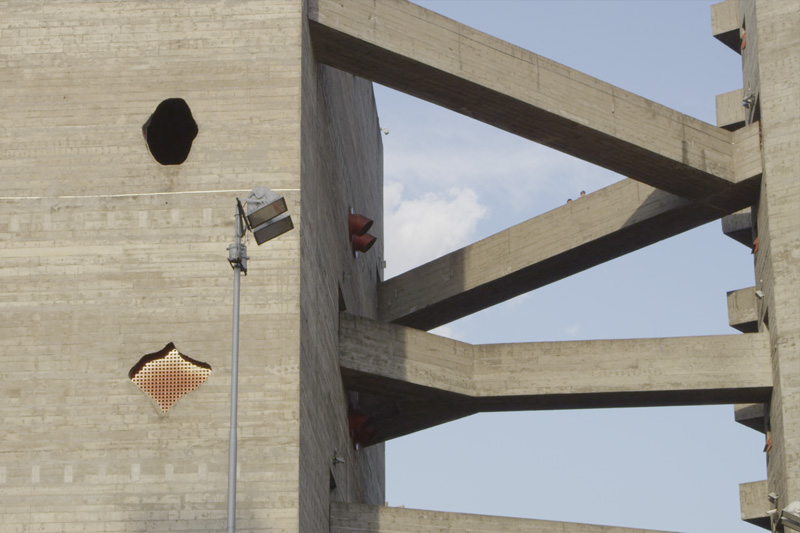
Dániel Kovács
Film: Precise poetry: Lina Bo Bardi’s architecture (Belinda Rukschcio, 2013, 55’)
Satudray 8 March – 17:00
Architecture is the answer to all the problems of humanity. Lina Bo Bardi’s work is based on that theory. She is the same age as modernity: born in 1914, the year of the Werkbund exhibition, in Cologne. She started her career in her home country, in Italy. Though Precise Poetry is a film on her life’s work, directed by her sixty years younger German colleague, Belinda Rukschcio; it is focusing entirely on Bardi’s Brazilian works. Lina and her husband arrived to Brazil in 1946 where they both made a great career – she as an architect while he as a museologist and art historian. Lina’s first plan (actually built in 1951), was Casa de Vidro, also shown in the movie, their home with her husband, a glass building standing on columns in the outskirts of Sao Paolo, just 2 years after Philip Johnson’s similar, renown building was built. The villa itself, once so visible, is hard to find today: Bardi re-afforested the property that was a tea-land previously, thus it feels like being in the woods behind the glass walls.
Though the film begins with Bardi’s famous work, the new building of Sao Paolo’s art museum (managed by Bardi’s husband at that time), the small villa tells a lot more about the architect’s personality: her faith in modern ideas and her distinctive spirit. That building had an important role in the intellectual life of the 1950’ of São Paulo: all the important people were invited to Sunday lunches. Like during those years back then, Bardi is becoming Lina within these very moments of the film. According to stories told by both clients and former colleagues – almost all of them are men – a picture of a rather autocratic, abstract minded figure of a woman is drawn who was also sensitive to practical issues – a true character of the 20th century.
And that is the biggest merit of the film. It does not aim to understand most of the buildings she designed, not even those that strongly contributed to the Lina-myth: such as the asymmetrical, punched, concrete silos of SESC Pompeia. In the meantime, during those long monologues, some really important things have been told, among others, references to the ideological aspects of Lina’s art. Who would dare to identify with that as an architect these days? Architecture is the answer to all problems of humanity. Lina Bo Bardi’s work is based on that statement, and it is nonetheless valuable, though we know: this statement is false.

Réka Kovács
Film: Space Metropoliz (Fabrizio Boni, Giorgio de Finis, 2013, 100’)
Friday March 7 – 21:00
Talking seems to rule this film a bit too much! The voluble Italian speech of this many contributors puts our ability of reading subtitles to the test, and as the story goes on, we can sweat more and more about missing some important details. Because it is not only the words that flow, but the excellent thoughts and ideas of these people, one better than the other. Avoiding any bullshit, there is always a new twist, point of view or truth that keeps forcing our stunned minds to come to the right conclusions. In the meantime the narrative is just being interpreted in Film Language with a great sense of proportion.
First of all, these Romans are very adorable. They declare a space program for a community on the margins, and everyone’s daily routine from the sax player to the philosopher, the radical ufologist, the acrobat, the architect, the astronomer, the artist, the performer and the facepainter girl gets into service. The purpose is a safe landing and a happier life on the Moon. By watching the enthusiasm of the organizers and the inhabitants of Metropoliz (Tor Sapienza district, Roma) about the project, considering their moon landing as a mere fake seems absurd. While Marco brings rocket models to perfection, Andrea designs a launch scaffolding, Daniel jumps into a spacesuit with ease and takes a moonwalk, Giuliano hangs out with the Moon rabbit and Cobol programs intelligent robots, there are unknown civilizations fighting in the kitchen, and delicious couscous being prepared. „A small step for mankind, yet a long trip for those who live on the other side of the city”, says the narrator right, when the company takes a bus to visit the planetarium. „You cannot go to the Moon with no money”, says a sceptic guy right at the start, and his sentence echoes on our minds from time to time, just as the famous quote.
However, this mixed colony of the abandoned salami factory had faced the lack of money and other troubles so many times that some mission to the Moon cannot beat them. The wide perspective that the project opens to them proves to be a good motivation to proceed. The reward for their efforts (and ours, who kept reading) is realizing that the completely new establishment based on the common good, in which refusing immigrants or the outcast is an absurdity – indeed can exist. The time of setting up national flags triumphantly on the surface of the Moon is over.

6th Budapest Architecture Film Days, March 2014
Deadline: 31th October, 2013.
Do you have a film on architecture? The Budapest Architecture Film Days is now accepting submissions for its 6th edition to be held in Budapest in March 2014. We are looking for works in all genres, forms and lengths related to design, architecture and built environment. Entry is free.
The mission of the film festival is to generate a dialogue between architectural practice that finds inspiration in cinema, and cinema borrowing its subjects from architecture and the city. For more information about the festival please visit www.kek.org.hu/filmnapok/en. For related questions please contact filmnapok@kek.org.hu.
Please find the steps of submitting a film below:
1 – Fill out the online submission form
2 – Send your film via an online file-transferring platform (dropbox, wetrasfer, etc.) to filmnapok@kek.org.hu
